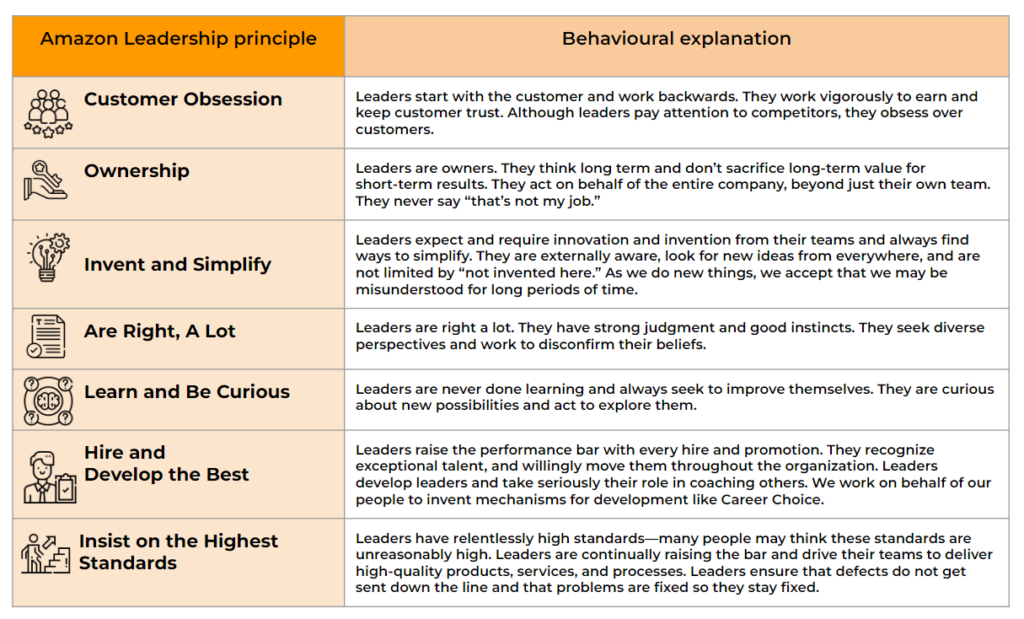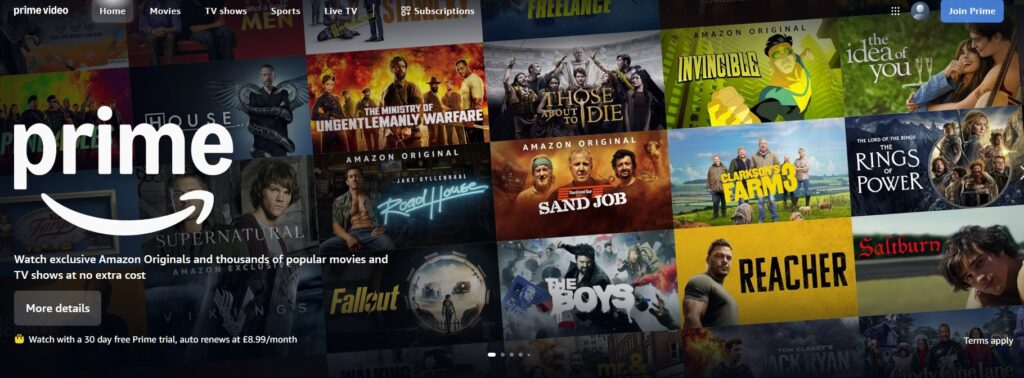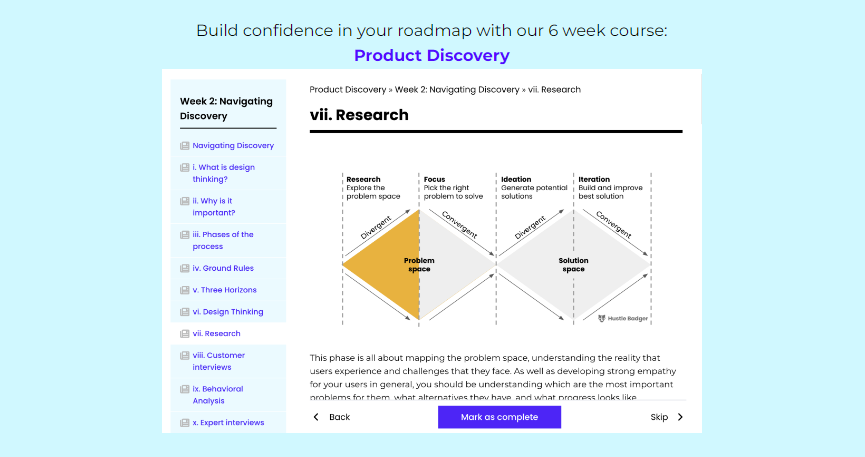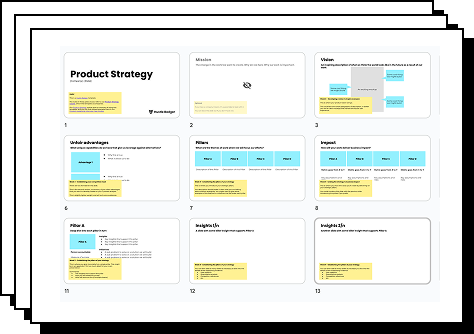Simon Waldman is currently CPO at QA Ltd, the UK’s largest tech training company.
He also works as a product coach, and writes the Product Bugle on Substack.
Simon is a veteran of product management, having started out at the Guardian in 1996, moving to LoveFilm in the DVD rental era, before being acquired by Amazon and launching Prime Video.
On top of that he’s held roles at Sky TV and the RAC, helping these UK institutions stay current.
Simon’s roles in full:
- CPO, QA Ltd: the UK’s largest tech training company
- Product Director, RAC: one of the UK’s largest automotive insurance and roadside assistance businesses
- Group Director of Product Management – TV Products, Sky: one of the UK’s largest cable television, internet and telephone services providers
- Director of Product Management, Amazon Instant Video: Amazon is the world’s largest ecommerce and logistics company, and Instant Video is the precursor to Prime Video, a streaming service provided as part of the Amazon Prime subscription service
- Group Product Director at LoveFilm: a UK-based DVD by mail and live streaming service acquired by Amazon in 2011
- Director of Digital at Guardian Media Group: One of the UK’s largest media companies, whose media operations include major newspapers such as the Observer and the Guardian.
He took time to share his journey from journalism to product leadership, his experiences at the Guardian, Amazon and Sky, plus his perspective on modern product management.
Introduction to Simon Waldman
Tell us a bit about yourself and how you’ve wound up where you are?
I started my life as a journalist on very niche fashion and retail trade magazines – Shoe & Leather News!
Then I moved to a magazine called Media Week. There I started writing about media and in particular about what was then called ‘new media’. Basically I was writing about how digital technology was going to change everything: in particular newspapers.
This led me to The Guardian, where I worked on the very early stages of their digital initiatives. From there, I found my way onto the product and product strategy side of things.
It was at LoveFilm where I took my first proper product job, which was a Netflix clone. This was back in the early days, so when the service still included DVD rental by post.
That morphed into a streaming service, which was then acquired by Amazon. I spent five years at Amazon, working on the launch of Prime Video in the UK and Germany.
Then I spent five years at Sky working on their TV products and apps.
Most recently, I was at the RAC, working on digital transformation there. Now I’m working as CPO at QA, which delivers workplace learning.

Simon Waldman
Pivotal moments in Simon’s career
Early involvement with digital at The Guardian
As a young journalist, the amount of access I had in my mid to late 20s was a massive help. The number of people I was able to go and interview about their first steps in the online world was a brilliant education.
At the same time there was a fantastic community feel at the time among people in media who ‘got it’, and who saw the potential of what this new thing called the internet could do creatively.
After a while I decided I had to get involved with the internet rather than just writing about it.
So in about February 1996, I walked into what was called the Guardian‘s New Media Lab to help out with a project called Euro Soccer – which was a one-off project around Euro 96 that had been sponsored by Stella Artois beer.
The main thing was we were going to do lots of match reports straight after matches and do it in lots of different languages.
It was just lots of pushing text into different places, but there was an organizational challenge of what you put where. There were all these people fizzing with ideas, so I grabbed a sheet of A3, and I created what was basically a site map, without actually knowing what a site map was.
What we launched and what ran all the way through Euro 96 was basically that page of A3 brought to life.
Even though the whole idea of a product role didn’t really exist then, I soon found that doing ‘producty things’ just fitted with my skills and interests.
Euro Soccer was great fun but the real work started after that when we got on with the job of building an internet presence for the whole of the Guardian newspaper.
It was helping what was initially called Guardian Unlimited to eventually become the site that you can see today.

The Guardian
Building it also shifted the organisation from delivering a paper once a day to being a global, 24 hour, news service. We started with a live news service during the 1997 election and just carried on building from there.
A lot of what’s now the standard offering for any news organisation on the web is a direct descendant of the creative ideas that we implemented in those early days.
Leaving the Guardian
I was at the Guardian for 14 years. Overall it was probably a bit too long. I had become the company’s first Director of Digital and after that I’d taken a corporate HQ strategy job that I was probably not totally suited to.
In that period I decided I didn’t want the Guardian to be the defining thing in my career and I also decided that I didn’t want to stay in newspapers.
The final thing which was clear to me at that time was that if I was going to keep learning in the current internet environment there were two things I needed to get hands-on experience of: e-commerce and video.
In my quiet moments, I wrote a book about how businesses were being disrupted by the internet and how they survived.

The book itself is deeply embarrassing to read now, but one of the things I wrote about was Netflix and how they took on Blockbuster. Then one day someone phoned me asking if I’d like to be considered for the role of Product Director at LoveFilm, which was building itself up as the UK’s equivalent to Netflix.
I jumped at this chance. I’d previously met Simon Calver the CEO, and been hugely impressed by him, and I was really lucky to get the call and eventually the job.
It was utterly transformational in my career: upping my product skills, working in a much more commercial environment, and learning about streaming.
Learn about Hard Skills for Product Managers
At the same time, LoveFilm was an amazing company to work for – with a really passionate team and a totally different culture to anything I’d known before.
After about two years, we were acquired by Amazon, who were already shareholders. That changed everything and gave my career a whole second burst.

Sale of LoveFilm: a Champagne Moment for UK Tech? – the BBC
Amazon has an interesting culture. What positive and negative experiences did you take from it?
Prior to Amazon I’d worked in relatively small organizations where everyone would do things differently. Particularly in media organisations you had entirely different cultures and ways of working, say between editorial and commercial teams.
Then I arrived at Amazon, and here was this massive organization where every meeting was structured in exactly the same way; where hiring and promotion were incredibly structured and well thought through.
Initially, given my background, I found it almost comically prescriptive, but over time I realised it meant you focused on what you were doing, not how you were doing it.
The uniformity at scale – based on a company thinking deeply about the best way to do things – was incredible.
How do Amazon maintain that uniformity?
The first thing you learn is their leadership principles which are applied everywhere. Now, lots of companies have their principles or their values or the thing they talk about when you onboard or maybe at evaluation time.
In Amazon, they are everywhere – you’ll hear people talk about them in meetings. They’re very present, from the way you’re interviewed to how you’re evaluated each year, even to how you tackle a project.
People will say I think we need to invent and simplify here or I think we need to think big or We’ve got to earn trust. So they are pervasive. And that’s unbelievably true.

Check out Hustle Badger’s Guide to Understanding Amazon’s Leadership Principles
Then there’s a set of processes everyone sticks to. Every meeting starts with something written down. This could be just a one-pager to spark discussion or it could be a six-page full-blown PR FAQ.
Even if you’re doing a design review, you’d normally have one page to explain what’s being done. Some VPs will not do a meeting unless there’s a document at the start.

The Hustle Badger Guide to Amazon PR FAQs | Amazon Working Backwards Process
Then one final thing which I found incredibly powerful was there’s also the COE (Correction of Error) process. If something goes wrong – not a personal mistake, but say your app crashes totally and you have a Sev 2 [major incident] – someone has to do an analysis.
That goes into a company-wide portal scrutinized by VPs, and all the COEs for the whole of Amazon are visible to everyone in the company. This sense of self-correction is very big.
So there’s all of these things that are in there and everyone plays by the rules basically. Partly it’s because you have lots of teams who are dependent on each other, so having common modes of behavior basically means there’s a shorthand for people to collaborate.
What did you work on?
Once we were acquired by Amazon I was grafted in to be part of the product leadership team just as we were launching Amazon Instant Video, shortly before it became Prime Video.
I started out running product for the web side of the business, and eventually took on the apps on mobile, living room devices and then our TVOD (TV On Demand, the rent and buy) business.

Amazon Prime Video
The scale of ambition, the clarity of thinking and the long term thinking were unlike anything I’d experienced before. It was ferociously commercial and ambitious, but at the same time, always thinking of the customer experience first.
The big project in the middle of my time there was deprecating LoveFilm – we wiped out the website, got rid of all the TV apps and launched everything as Amazon Video overnight in the UK and Germany. We did that on February 26th. We had our 10 year anniversary recently.
In hindsight, it was the most incredible thing to have worked on, but at the time I have to admit it was a massive and often very stressful slog. I did not – to use product jargon – feel very ‘empowered’.
Launching Amazon Prime was a really challenging, high stakes initiative, and one which was made more complex and culturally challenging by working between Seattle, London and Bangalore. But when you work on something of that scale, the sense of achievement and the bond you form as a team working on it is unparalleled.
So yes, I was able to work on a really exciting area. I learned a ton and I worked with some truly brilliant people. But was every day happiness and light? No, I had some of my worst days and some of my best days during that period. But I wouldn’t have swapped it for anything.
What were the negative lessons you took away?
Some of the culture was a little direct, shall we say. Personally, I think I let that get to me. When you’re slightly lacking in confidence, you can take a lot of pressure and just apply it onto your team.
Over time, you learn that as a leader it’s much better to be a shock absorber of that pressure rather than just a conductor of it.
“At Amazon, workers are encouraged to tear apart one another’s ideas in meetings, toil long and late (emails arrive past midnight, followed by text messages asking why they were not answered), and held to standards that the company boasts are “unreasonably high.” The internal phone directory instructs colleagues on how to send secret feedback to one another’s bosses. Employees say it is frequently used to sabotage others.”
– Inside Amazon: Wrestling Big Ideas in a Bruising Workplace, New York Times
Leadership and Management
Transitioning to leadership
What have you learned about transitioning to leadership?
One thing that’s a little overplayed is that when you take your first steps into management, there’s a lot of narrative around What got you here isn’t going to get you there.
People can sometimes psych themselves out and suddenly think they have to become ‘manager me’. They then can turn into this awful beast, losing all the stuff that actually got them promoted.
One of the really important things is: you were really good at your job – don’t lose that. That expertise is something you want to bring to others and help them with. Don’t chuck away your past and suddenly think, I’ve got to be this leader who’s this different person.
The other thing is that your job once you start managing people is to help them do a great job. Your job is not to criticize, chastise, punish – it’s to understand people as people, what motivates them, and help them do their jobs.
A lot of that comes from actually listening to them. You think that what you want to do is set direction and be clear, but actually listening to your teams and understanding where they’re coming from and what they’re trying to achieve and then helping them get to where they want to is a big part of it.
A lot of what you do as a product leader – whether you’re a head of, director, VP, even up to CPO – you’re still a kind of middle manager. You’ve got doers below you and decision makers above you. And being that tissue of connectivity – understanding the role you play in that chain is vital.
Facilitating teams
When I was at Sky, I managed quite a large team and there was a lot of pressure on me.
My boss was pretty challenging, and at first my reaction to this was to behave in the way that I’d behaved and I’d seen others behave at Amazon, which is to say to become very challenging, very direct, interrupting people as they were presenting to me, and using humour and sarcasm in a way that I thought was light and witty, but was often just not. As I sometimes explain it – the classic ‘shit sandwich’.
It didn’t occur to me that I was at fault. I was getting pressure from above, and then echoing that in the way I treated my team. I would tell myself: This is just the culture. But as I mentioned before, with maturity you realise even if that is the culture, your job is to protect your team from it.
Two things really changed me.
The first was reading a book called Leadership is Language by L. David Marquet, which made me realise just how damaging some of the behaviours I was demonstrating could be.

But the actual change in my behaviour started from a change in the way we did product discovery at the RAC.
It was something we’d been pretty poor at, so we specifically implemented a weekly discovery meeting, with the whole team.
We talked about all the bits of work that were in the pipeline.
I didn’t chair the meeting, one of my team chaired it and did an amazing job (thank you Nick!).
My job was just to listen and to get the people in the room talking and asking questions. Towards the end, if necessary, I’d set some direction.
We made this a very low jeopardy meeting. We read documents – Amazon style – but without any of the obsession about writing style and format. We made it a positive experience for bringing work into the room, rather than an ordeal that people had to go through.
It was an eye opener to me how much more productive and happier everyone was as a result. We also managed to avoid a ton of disasters because people were surfacing issues and things they had challenges with much earlier on.
At the end of the year we did our annual people survey and the engagement scores were massively up. The biggest change was around empowerment and loads of people mentioned that meeting as a highlight.

Hustle Badger’s Product Discovery Course
Managing up
Managing up is by far the tougher part of the job. The main thing is constant, but focused, communication. It’s about making sure there’s no secrets and no surprises.
A large part is understanding What is it that your manager needs? What’s the best way for them to consume information? How do they want to hear from you? How do you make sure that they don’t get surprises and shocks in a way that is going to put them under pressure?
When you’re communicating, there’s a few principles that tend to apply regardless of the environment.
- Give context: Why are you talking about this thing now? How big an issue is it really in the grand scheme of things?
- Be clear what you want: ‘I need you to approve a decision’ is a very different instruction to from ‘I’m looking for your guidance on’ or ‘I just want you to be aware of’
- Come with solutions, not just problems: This is a bit of a cliche, but you don’t want to look helpless. Even if you’re not sure which direction to take, at least show you’ve worked through the options.
- Explain your thinking: If you’re making a decision, show your workings. That means going through the options you considered and why you chose the path you want to take. It’s too easy sometimes to just start pitching your genius idea which can lead to a lot of ‘Why..?’ and ‘Did you think about..?’
When you don’t feel you can communicate up constructively and when you start to get too stressed and panicked about it, then that’s not a good relationship.
Developing a product strategy
When I was at the RAC, the RAC’s app, My RAC was somewhat languishing, but not for lack of ideas.
There were lots of things we could do, and lots of ideas flying around. But strategy isn’t about ideas; it’s about focus and action. Through a combination of listening to customers, looking at market opportunities and looking at where our strengths were, we eventually got to the decision that we were just going to help people with the ownership of their car.
So the strategy is not going to be about buying or selling, and we’re not going to be about driving – things like directions and parking – because others could do that more effectively.

The revamped My RAC app
We built a set of functionality around car ownership and then started to do some promotion around it. That helped us to double the audience on the app. Then we layered in the upgrade mechanisms so we could sell more stuff from it.
The things we did were things like helping people to find their fuel at the cheapest price, and setting reminders for people for car maintenance.
We deliberately built out a conscious strategy around useful push notifications, since overall topics like this are a low interest category, and just made sure we were giving people genuine value with those communications. We increased our upgrade volumes substantially with this strategy.
We did all of this within about nine months. There was also only one squad on it. There was lots of stuff going on but we did all this quite quickly. It was really about taking an abundance of ideas, narrowing the focus, building some neat bits of functionality.
Which habits should product managers adopt?
There’s no end of books, podcasts, and LinkedIn posts telling product managers how to do their job. Some of it is very useful, but in aggregate it can be overwhelming.
Do the job which needs to be done
My first bit of advice is ‘read the room’ – and do the job that needs doing in the place you’re working.
Different companies, and different types of organisations have different needs of product managers.
Start-ups are different to corporates which are different to scale-ups. Public sector is different to private sector. B2B is different to B2C.
The ways of working where you work might not fit with the description of product management that you have read about in a book.
It’s unlikely that you’re really going to get to change that. Do what’s needed to be successful and effective in your current role and organisation. If you do that, you will find yourself in a much better position either to make a change for the good, or to go chase perfection next time.
Be someone people want to work with
Next is to be someone that people want to work with. If you move into management, be someone that people want to work for. Earn trust. Communicate and collaborate. Really listen to people and understand their motivations and the pressure they might be under.
This is particularly important when it comes to developing peer relationships across your organisation. Both with other product managers and leaders and with other disciplines.
Own your career
The final piece of advice is to really own your career. It’s almost impossible to plan a long time ahead – life, technology and the economy throw too many curveballs for that.
But do think deliberately about what actually matters to you and what the ‘must haves’ are over the next 1 – 3 years, and what you might be prepared to trade in order to get those things.
If you want money fine – just be prepared to trade off a fair bit of autonomy and work/life balance (or vice versa).
I often tell people you can rarely get everything you want in a job, but if you’re deliberate, you can get it all over the duration of a career.
Hustle Badger Resources
[Course]
[Articles]
[Interviews]
Other Resources
[Further Reading]
[Products]
FAQs
Who is Simon Waldman?
Simon Waldman is a product leader and coach who has led digital transformation at major companies including The Guardian, Amazon, Sky and the RAC. Starting as a journalist covering the early internet, he transitioned to product management and has held senior positions including Digital Director at The Guardian and the Director of Product Management for what went on to become Prime Video.
What does Simon believe makes a successful product manager?
Simon emphasizes communication as a killer product management habit telling people what you’re going to do, when you’ve done it, and how it performed. He believes strong communication and cross-functional relationships are crucial, along with focusing on actual impact and results rather than methodological purity.



